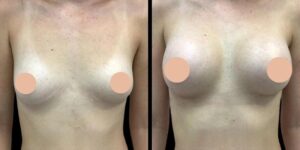
Sunlight may feel amazing on the skin, but overexposure can leave long-term damage that’s not always visible at first. Wrinkles, dark spots, uneven tone, and even rough texture are all common signs of sun-damaged skin. Thankfully, modern aesthetic technology offers advanced solutions, and laser therapy is among the most trusted options. In fact, Laser Treatments Dubai have become a popular go-to for individuals seeking smoother, brighter skin after years of sun exposure. But how exactly does laser therapy work on sun-damaged skin? Let’s explore the science behind it, what you can expect during treatment, and how it can rejuvenate your skin from the inside out.
Understanding Sun-Damaged Skin
What Is Sun Damage?
Sun damage occurs when ultraviolet (UV) radiation from the sun penetrates the skin and damages its cellular structure. This often results in:
-
Hyperpigmentation (dark spots or sunspots)
-
Fine lines and wrinkles
-
Loss of skin elasticity
-
Uneven skin tone or texture
-
Redness and inflammation
What Is Laser Therapy for Skin Rejuvenation?
Laser therapy involves the use of concentrated light energy to target and repair various skin concerns. For sun damage, lasers are tuned to penetrate the layers of the skin and stimulate natural healing processes.
There are two main types of lasers used for sun-damaged skin:
| Laser Type | Description | Ideal For |
|---|---|---|
| Ablative Lasers | Remove the outer layer of skin | Severe sun damage, deep wrinkles |
| Non-Ablative Lasers | Stimulate collagen without removing the top skin layer | Mild to moderate sunspots and texture |
How Does Laser Therapy Treat Sun Damage?
Laser therapy works by delivering precise beams of light into the skin. These beams are absorbed by pigment (melanin) and water molecules in the skin. Here’s what happens next:
Pigment Breakdown: The laser breaks down clusters of melanin that cause dark spots.
Collagen Production: The heat stimulates fibroblasts, triggering collagen and elastin production.
Cell Renewal: Damaged skin cells are removed or shed naturally, allowing healthier skin to take their place.
Skin Tightening: Increased collagen smooths fine lines and firms the skin.
Treatment Process: Step-by-Step
Here’s what you can expect during a typical laser therapy session for sun-damaged skin:
Consultation and Skin Assessment
A thorough skin evaluation is done to determine the type and extent of sun damage. This also helps identify the most suitable laser type and intensity.
Skin Preparation
-
The skin is cleansed of any makeup, oils, or sunscreen.
-
A numbing cream may be applied for added comfort (depending on the laser used).
Laser Application
-
The laser device is gently passed over the treatment area.
-
You may feel a warm or tingling sensation, similar to a rubber band snap.
Cooling and Soothing
-
After treatment, the skin may be cooled with a soothing gel or cooling device.
-
Redness and slight swelling are common and usually subside within hours to days.
Aftercare Instructions
-
Avoid sun exposure and use SPF daily.
-
Keep the skin moisturized.
-
Avoid harsh products for several days post-treatment.
Benefits of Laser Therapy for Sun Damage
| Benefit | Why It Matters |
|---|---|
| Reduces Pigmentation | Fades sunspots and evens skin tone |
| Stimulates Collagen | Improves elasticity and firmness |
| Minimizes Fine Lines | Smooths out early signs of aging |
| Improves Skin Texture | Reduces roughness, leaving skin soft and refined |
| Boosts Confidence | Enhances overall skin appearance and self-esteem |
How Many Sessions Are Needed?
The number of laser sessions needed varies depending on:
-
The severity of the sun damage
-
The laser type used (ablative vs. non-ablative)
-
Your individual skin type and healing response
General Guidelines:
| Skin Concern | Suggested Sessions |
|---|---|
| Mild Pigmentation | 1–2 sessions |
| Moderate Sun Damage | 3–5 sessions |
| Deep Wrinkles/Texture Issues | 4–6 sessions |
Who Is an Ideal Candidate for Laser Therapy?
Laser therapy can benefit a wide range of skin tones and types, but it’s especially ideal for:
-
Adults with signs of chronic sun exposure
-
Those with visible sunspots or age spots
-
Individuals with rough or leathery skin texture
-
People who want a non-invasive skin rejuvenation option
FAQ’s:
Is laser therapy painful?
Most people describe the sensation as mildly uncomfortable but tolerable. Numbing creams are usually applied to reduce any discomfort.
Can I wear makeup after laser treatment?
It’s best to avoid makeup for at least 24–48 hours post-treatment to allow your skin to breathe and heal.
How long do the results last?
Results can last for months to years, depending on how well you protect your skin afterward—especially from the sun.
Are there any side effects?
Temporary redness, swelling, and mild peeling are common. Serious side effects are rare when the procedure is done correctly.
Can I get laser treatment during summer?
You can, but strict sun protection is essential. Post-treatment sun exposure can lead to complications or reduce effectiveness.
Conclusion
Laser therapy is a powerful, science-backed method to reverse the visible signs of sun damage. From erasing dark spots to smoothing fine lines and encouraging collagen renewal, it offers a comprehensive skin rejuvenation approach. When performed correctly and followed by proper aftercare, it leaves your skin healthier, brighter, and more youthful.



